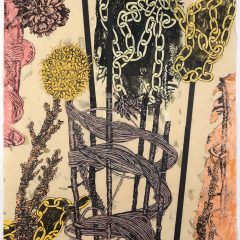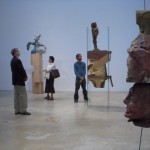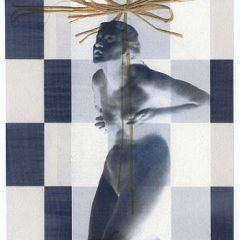“. . . I try to portray the humanist condition of being alive in a world where fear, love, anxiety, desire, and loss cross fertilize. It’s a sexy, messy business but someone has to do it, right?” –Paul Cava.
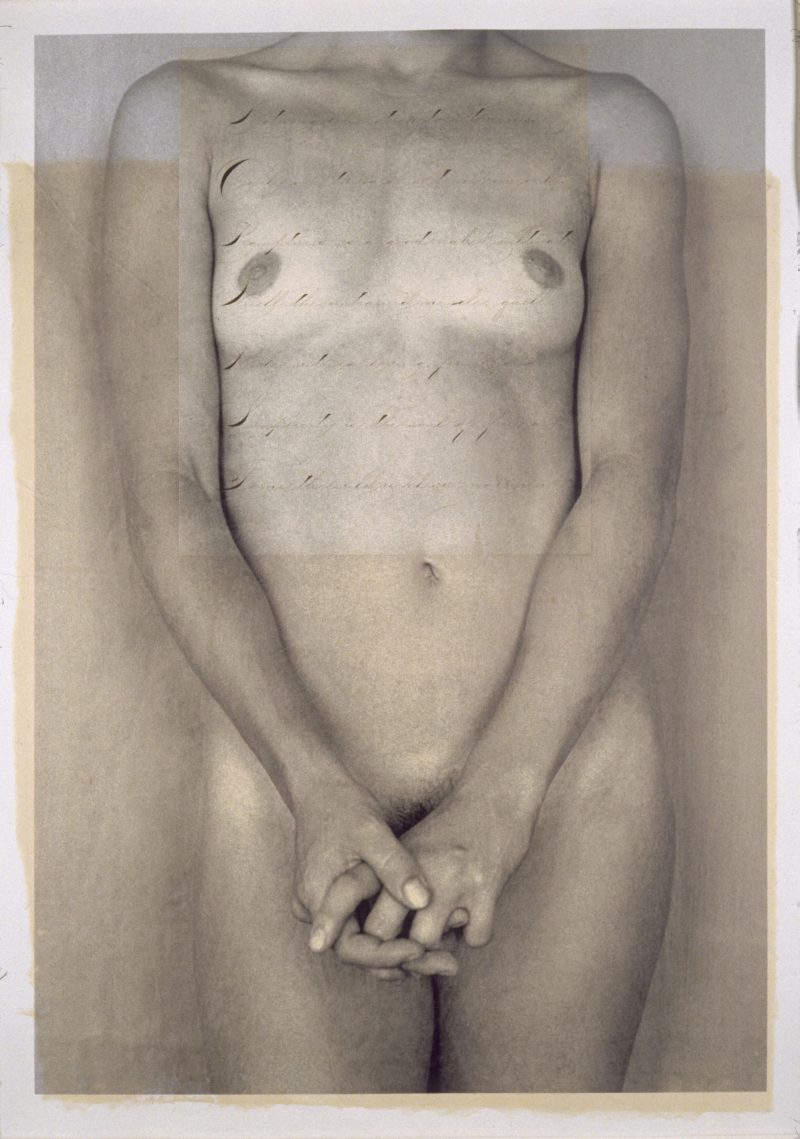
Paul Cava, Iris print, chine-collé and antique penmanship paper, 18” x 13”, Unique, 2001. Image courtesy of the artist.
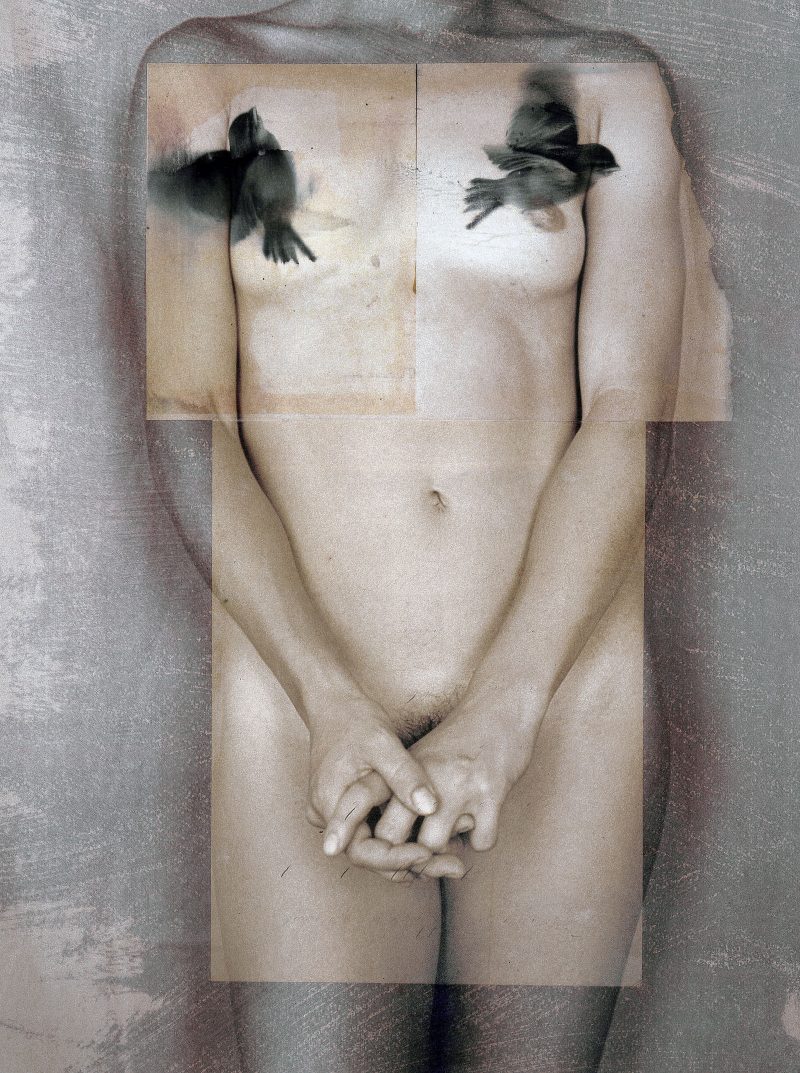
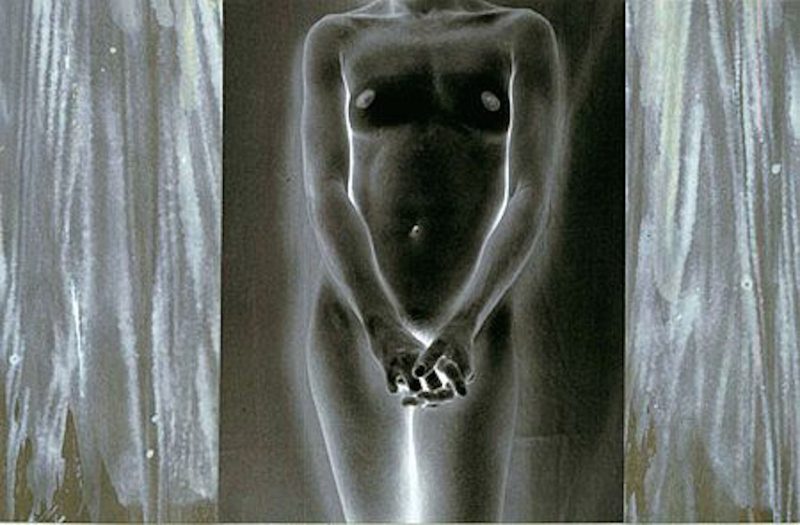
Kindred spirit to Man Ray
If I told you that these three Sylvia torsos were the work of Man Ray, you would probably not be surprised. Think of Man Ray’s famous solarized and isomorphic torsos of Lee Miller and his other intimate studies of the female body, portrayed with dazzling beauty. But this is the work of Paul Cava. There is more passion in Cava’s work than there is in Man Ray’s, more romance, more eroticism. Clearly both artists share a reverence for and celebration of the grace and beauty of women, but the work of both is stunning and original, poetic, brilliantly metaphoric, and life-affirming.
As for Cava, take, for instance, the stylized and unusual composition of tones and planes in “Sylvia (Two Birds),” with the delightful fluttering birds over the breasts of the figure, a reminder of the innocence and purity of the natural world of which we humans are one small part. The hands of the figure, too, hands which connect us to each other and to the world beyond, are remarkable for their delicacy and prominence. In the inverted image of “Sylvia Milk” there is the backlight, but also the powerful inner light (and darkness) of the figure that shines through, perhaps Cava’s secular rendition of individual divinity, spirituality, and enlightenment.
Early influences of poetry and cinematography and his important gallery, opened in 1979
Cava’s work is reflective of his immersion in the culture of art and literature of the times and places in which he worked and developed. In addition to photography, Cava studied poetry and cinematography and lived in New York in the 1960s and early 1970, and you can feel the influence of both modalities — poetry and cinematography — in his photo-collages. As Cava noted in an interview with Sid Sachs published in 2010 in connection with a retrospective of his work at the UArts Rosenwald–Wolf Gallery, his influences include painters and poets: “Walt Whitman, Allen Ginsberg, Gertrude Stein, Schwitters, Rauschenberg, Motherwell, Brakhage, Morandi, Guston, Scully, and Nozkowski have all had a hand in the way I think about art.”
Cava first opened a gallery in Philadelphia in 1979, which in various iterations remained open into the 1990s. He showed the work of a group of remarkable artists including Jock Sturges, Ray Metzger, Neyssa Grassi, Francesco Clemente, Sharon Horvath, Susan Tiger, Mel Bochner, Vincent Gallo, Marcus Leatherdale, Joel-Peter Witkin, Wilhelm von Gloeden, Susan Fenton, Steven Baris, David Lebe, Becky Johnson, Philip Govedare, Mark Goodwin, John Carnell, Robert Asman, Judith Joy Ross, Nancy Helebrand, and Judith Steinhauser. In 2005, the German publisher Galerie Vevais, published Walt Whitman / Paul Cava, Children of Adam from Leaves of Grass – a bold union of Whitman’s erotic poems and Cava’s art work.
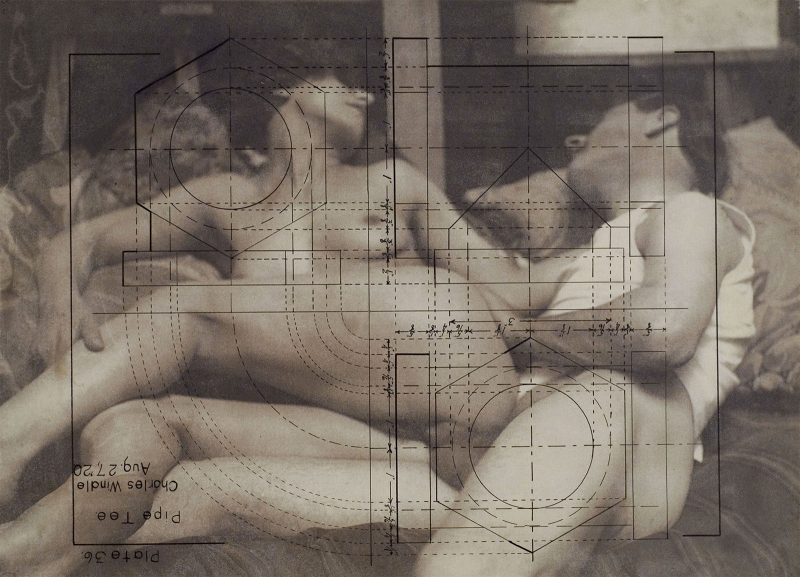
Remarkable variations of Variations
Variations includes twenty examples of Cava’s work going back at least to 1999, and it is quite amazing to experience his creative explorations in printmaking and his photographic collage derivations. There are multi-layer collages made over reprints of vintage photographs, for example. “Sylvia (Calligraphy),” pictured above, is an iris print, chine-collé and antique penmanship. His “Pipe Tee” (2000), reproduced here, and a wonderful example of Cava’s romanticism and eroticism, is an archival pigment print of a vintage erotic photograph under an engineer’s mechanical drawing from 1920 of an infrastructure schematic for pipes (and tees). The piece invites an intimacy with the observer which is sensual and dreamy. And it captures the mood of a past which sometimes seems lost in the glitter of modern photorealism. As Cava expressed in the Sid Sachs interview referenced above: “My concept of time is inclusive of the past but with a pulse.”
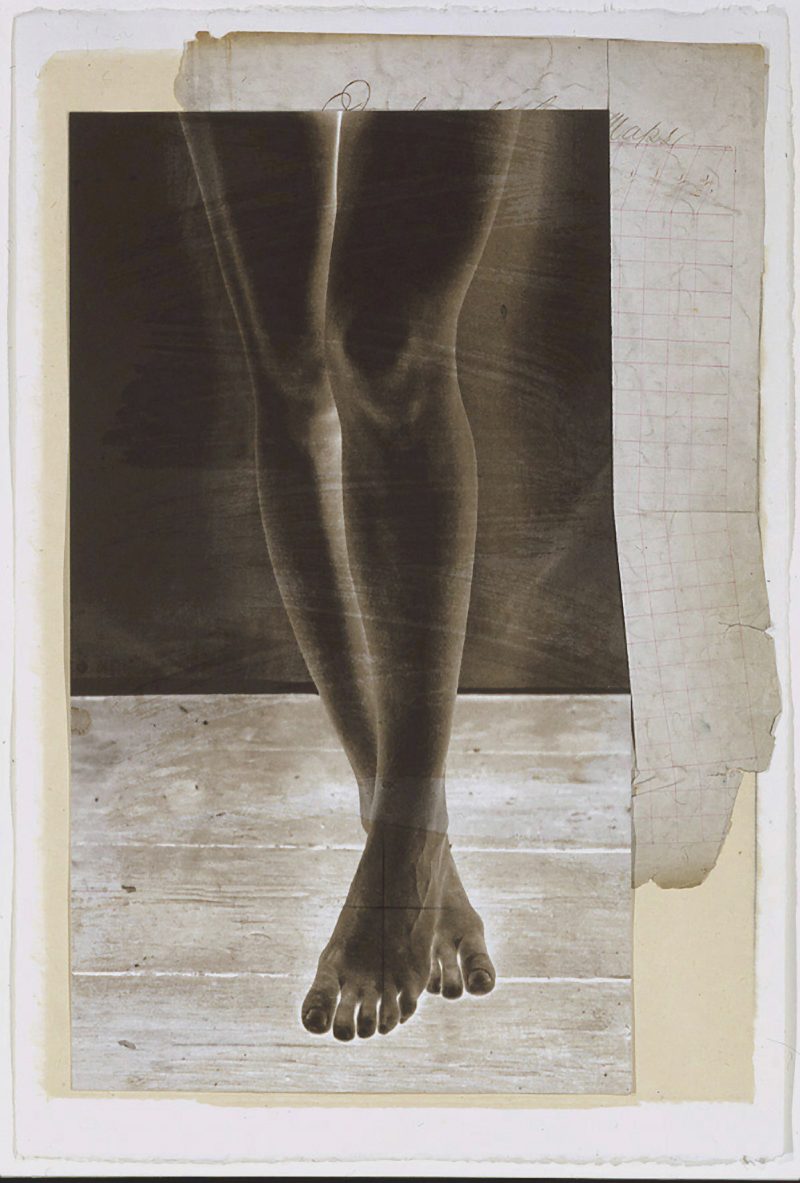
Artist of the human condition
I found myself engrossed by the gracefulness of “Legs.” The composition, the tones, the flooring (as simple and magnificent as Sarah McEneaney’s studio floors), the intriguing, partly-obscured handwriting on graph paper, the kneecap, the lighting, the way the legs are crossed, gravity. Like the Sylvia torsos, this figure, while isolated from its full corporeal form, remains tender, alluring, and surprisingly complete.
Paul Cava is an artist of the human condition, and particularly of the beauty of the human form.
Like Walt Whitman, whose poetry has played a critical role in his development, Cava’s work is uniquely lyrical, honest, soulful. It is pure, in a manner which invokes innocence, and sensually engages the spirit. It is also gutsy. For example, his unabashed and elegant eroticism — the erotic being a genre into which most artists don’t go, not even on tiptoe — is unconventional and breathtaking.
Variations includes samples of Paul Cava’s extensive canon of work far beyond what I have highlighted here. See more at the artist’s website. The exhibit is up to July 15 at the C.R. Ettinger Studio, 2215 South Street.


